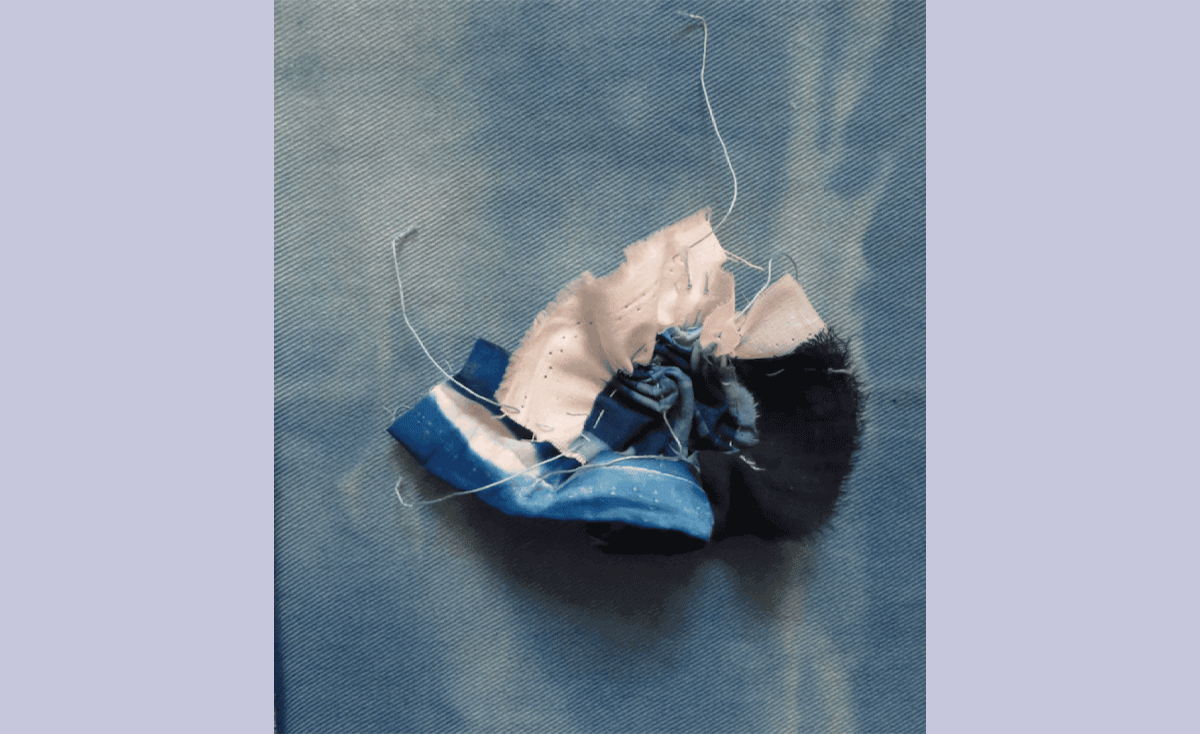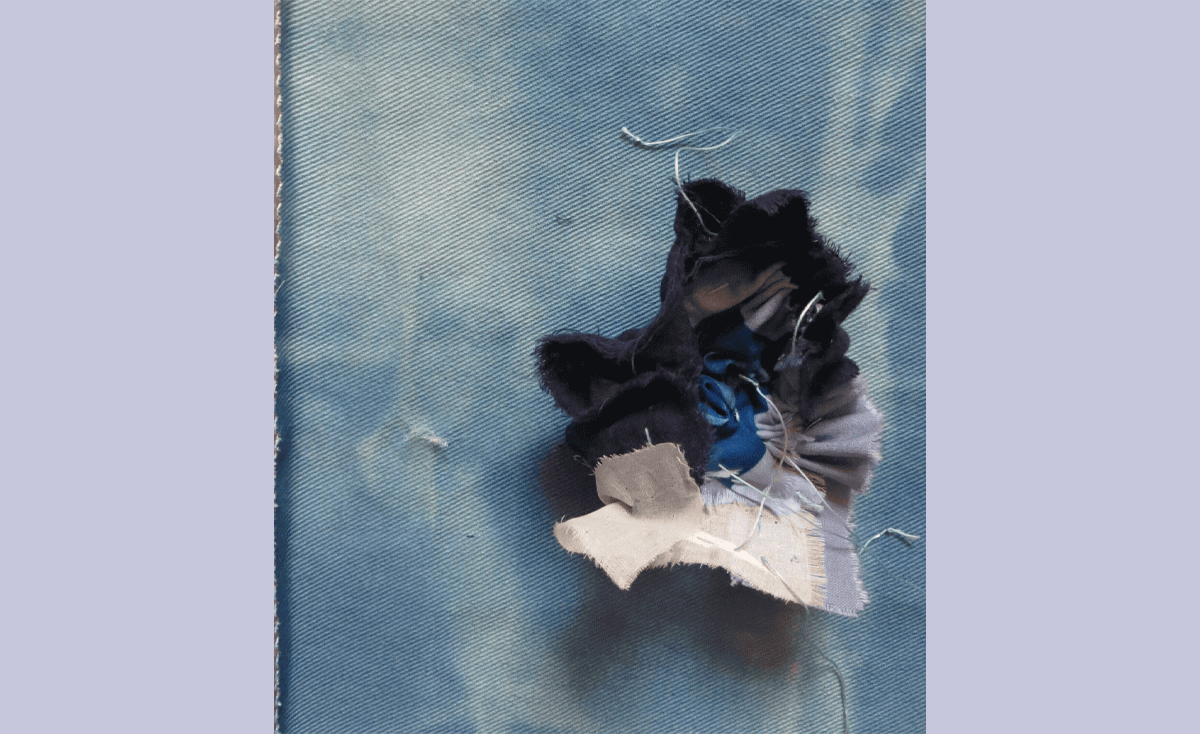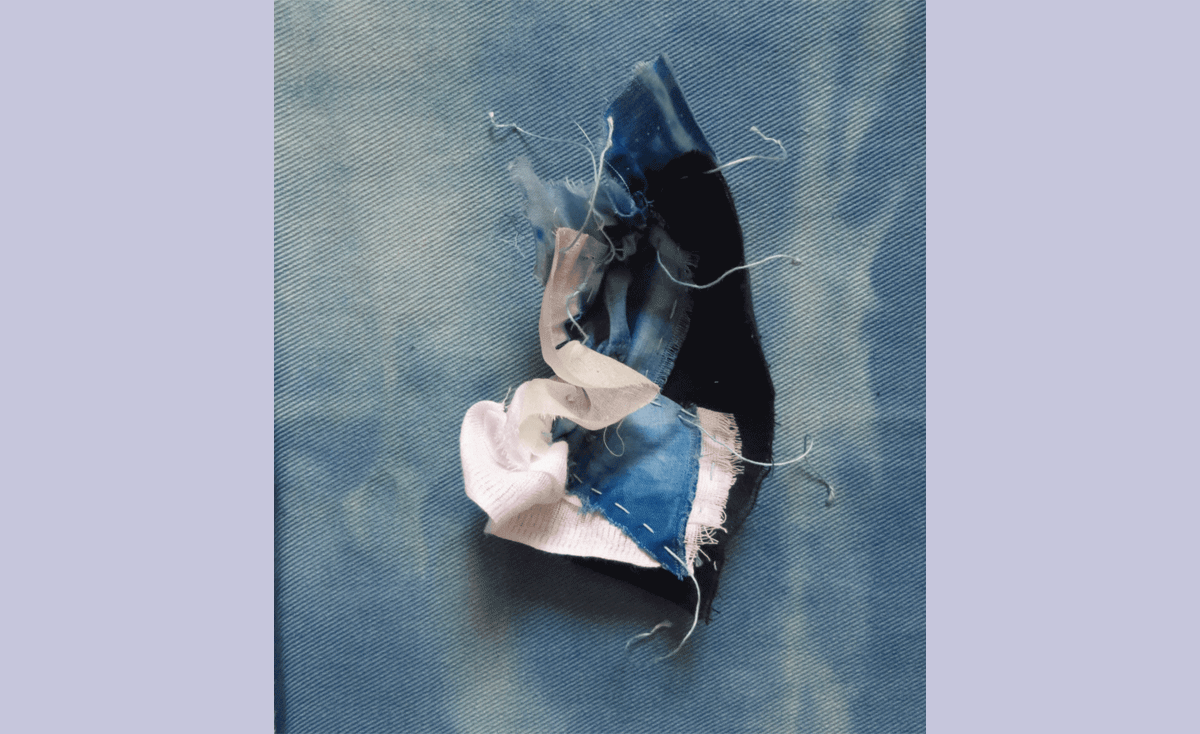I Stitch Myself Into The Frame
Cyanotype printed cotton and other cotton fabrics, cotton sashiko thread.



Combining film and textiles is a central part of my practice; the fable of the elephant made me think about how filmmaking and textiles often assemble parts into a whole. The fable also brings the idea of tactility to the forefront, which is not always an obvious aspect of filmmaking, but is an essential part of textile work for me: I am drawn to the feeling of creating physical objects that can be returned to, touched, interacted with and potentially changed. In this piece I wanted to explore the presence of the hand of the maker in textiles and filmmaking, making obvious the cuts and joins and distortions the artist/maker enacts on fabrics and subjects.
As a starting point I used cyanotype printed cotton, a technique that literally translates light into image and an early form of photography. I built on these prints using a traditional log cabin patchwork technique, which builds layer by layer around a central block, creating additional context and expanding the piece. This technique can be found in many patchwork and quilting traditions, but my favourite examples are produced by the Gee’s Bend quilters (@geesbendquiltmakers). The stitching is inspired by sashiko, a Japanese textile art form that can be translated as ‘little stabs’, this is both a functional stitch which reinforces fabrics and a decorative skill. While my stitch work does not approach the evenly spaced ‘true’ sashiko, I used the form to explore the rhythm of stitching in relation to filmmaking. These running stitches also create texture and you can literally pull a thread to alter the form and image presented.
Textiles are not isolated or free from the wider context of our present. The background fabric used here is a natural dyed indigo cotton created by Samak Bilab Bi Delo (@bi_lab_bi), a multi-national collective which is dedicated to the production of contemporary artwork rooted in the cultural legacies of Palestinian textiles. These fabrics were created for the Material Power exhibition, celebrating Palestinian embroidery.
Thanks to Lea Cooper (@zine_jam) for gifting me the offcuts and scraps from their cyanotype experiments and their recent artwork “This is Not a Place of Safety” 2024.
Jenny Clarke works in both the world of textiles and the world of film. She is a self-taught embroiderer and stitcher of all things, who is passionate about embroidery traditions and history, particularly embroidery as a feminist art form. She is a writer, curator, script reader and short film watcher. Jenny also works as a haberdasher and is a member of the queer feminist film curating collective, Club des Femmes.